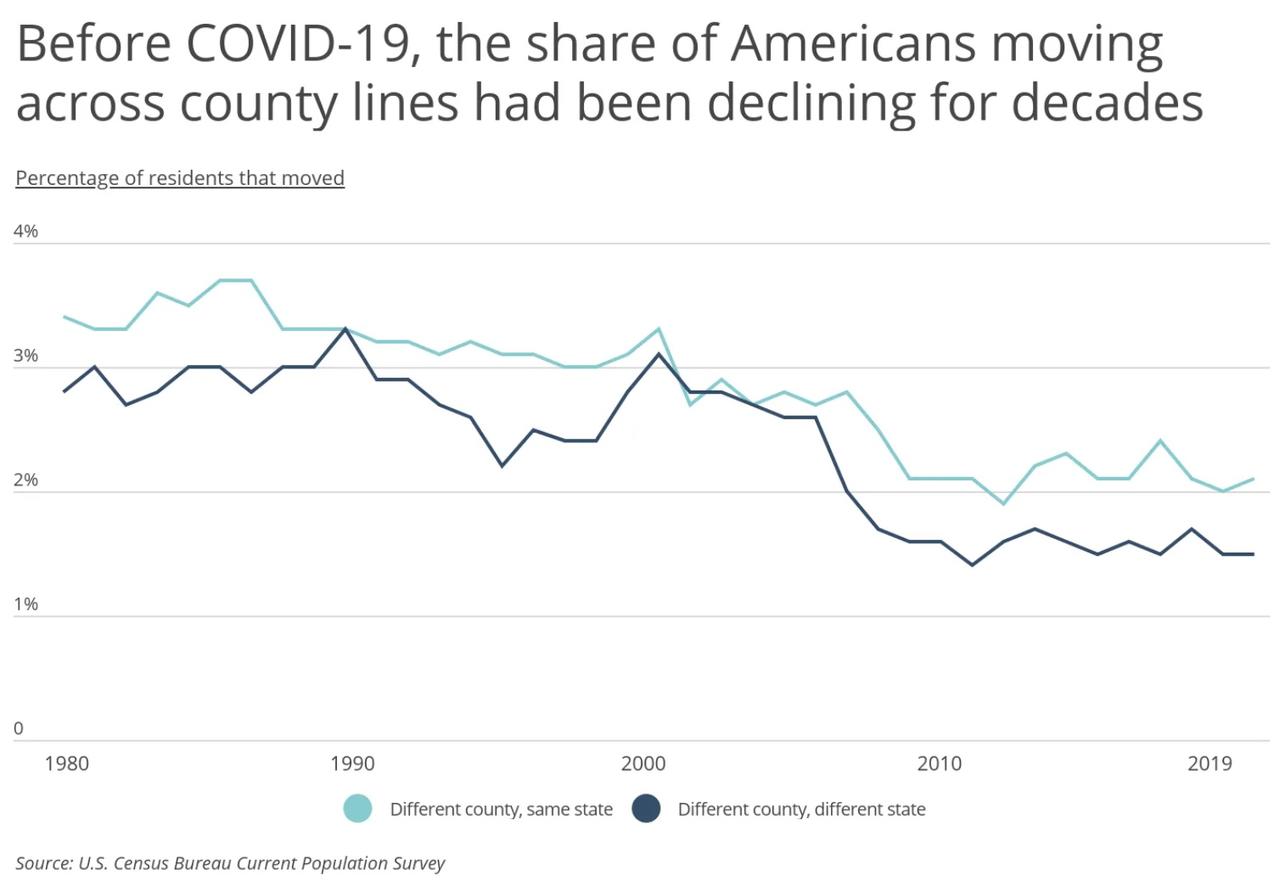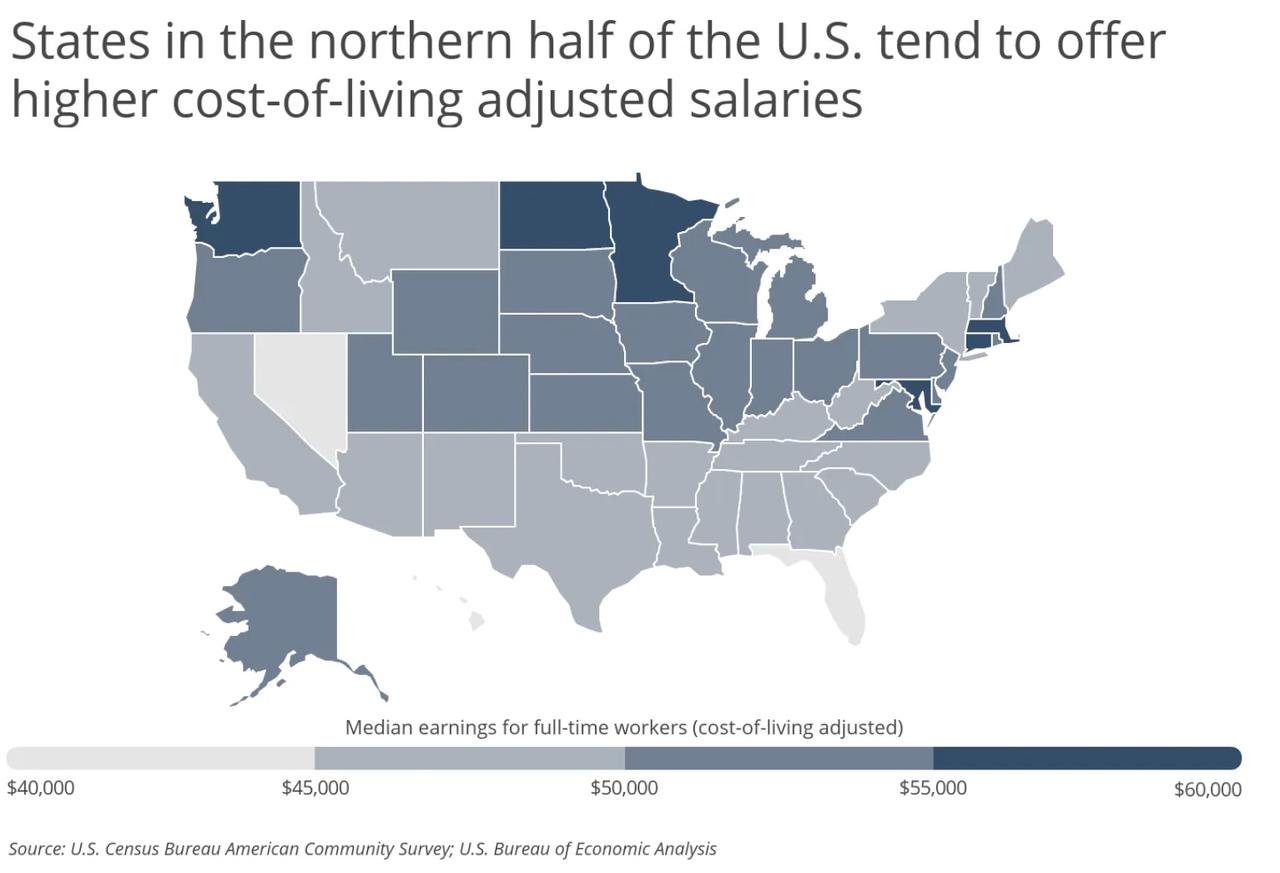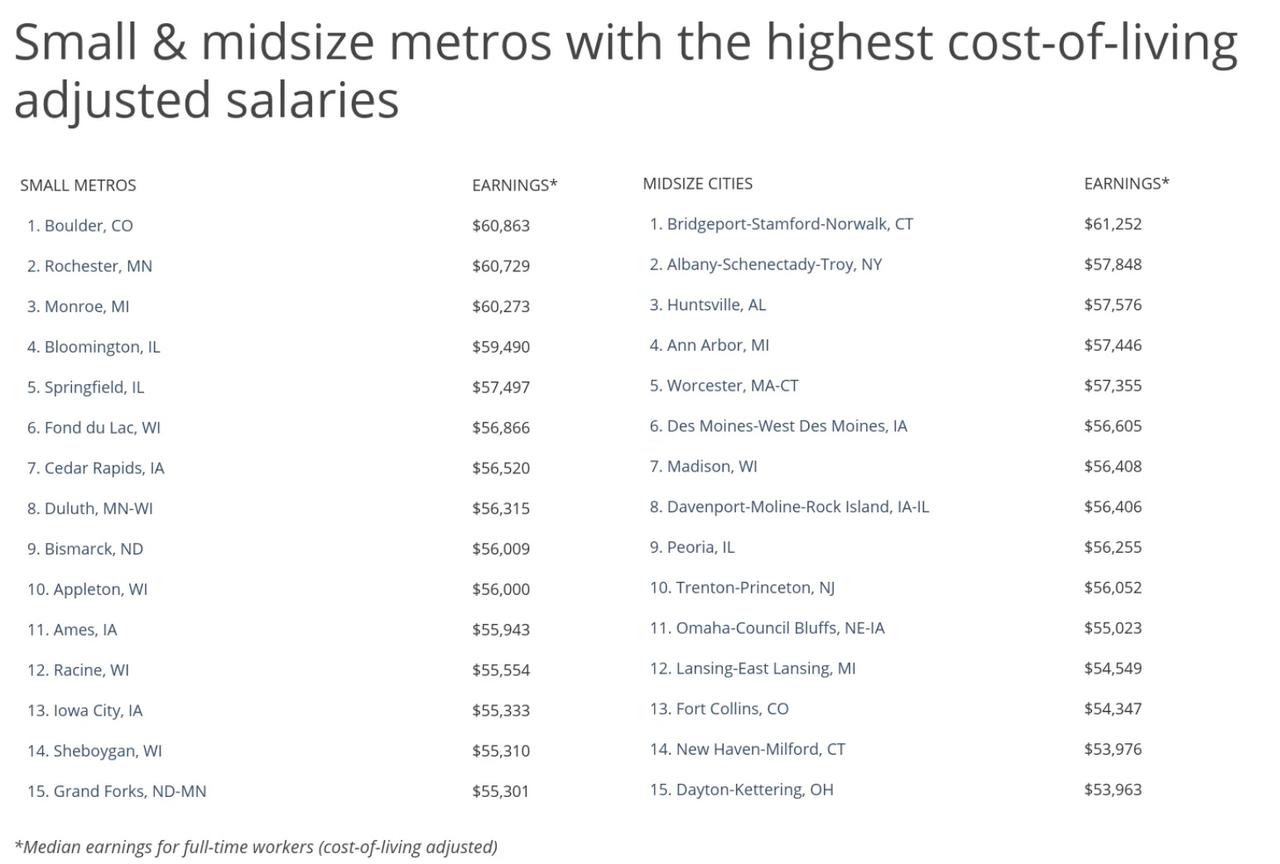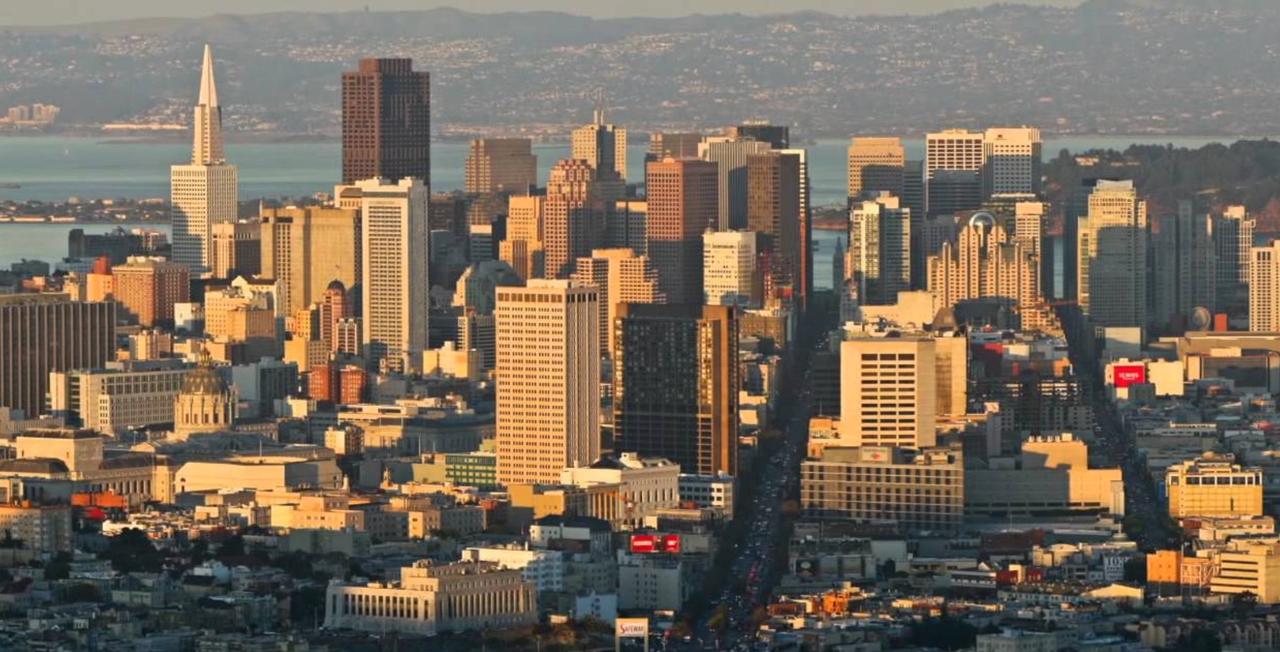With Microsoft becoming the latest major tech company to signal to employees that they can apply to make "WFH" a permanent element of their schedule, millions of Americans are contemplating moving away from densely packed cities - indeed, many have already made the move. According to data released Friday, the apartment vacancy rate in Manhattan has hit 6%, more than double the average at this time of year.
According to Pew Research, 22% of American adults have relocated during the pandemic, or know somebody who did. It's a sudden reversal to a yearslong trend of Americans largely staying put.
Anybody who's thinking about "pulling a geographic" might want to take a look at a report published this week by Smartest Dollar, which digs into the cost of living in different cities across the US. The general theme should be familiar by now: workers from expensive cities like NYC could potentially maximize their earning power by moving to a sleepy Midwestern city where the cost of living can be significantly lower.
Here's more from Smartest Dollar:
The COVID-19 pandemic has sparked a surge in geographic mobility. According to Pew Research Center, 22 percent of adults in the U.S. have relocated during the pandemic or know someone who did. Interestingly, this reverses a longstanding trend in which Americans were staying put.
Data from the U.S. Census Bureau shows that prior to COVID-19, Americans were moving a lot less. In 1981, 3.4 percent of Americans moved to a different county within the same state while only 2.8 percent moved to a different state entirely. By 2019, those percentages dropped to 2.1 percent and 1.5 percent, respectively. The share of Americans moving across county lines has remained at a relatively flat, low level since 2010.

As people think about where to move during COVID-19 and beyond, job prospects and earning potential will be top of mind. Median earnings for full-time workers in the U.S. was $50,078 in 2019, a 20.6 percent increase since 2010 in nominal dollars. However, the relative cost of living in a given area impacts purchasing power and should be an important factor when weighing employment opportunities. There is significant regional variation in cost-of-living adjusted earnings across the U.S., with residents in the Northeast and Midwest generally faring better than those in the South or West. For example, median adjusted earnings range from a low of $41,063 in Florida to a high of $58,029 in Massachusetts.

To find which metropolitan areas offer the greatest purchasing power, researchers at Smartest Dollar calculated cost-of-living adjusted earnings using data for full-time workers from the U.S. Census Bureau and U.S. Bureau of Economic Analysis. To improve relevance, metros were grouped into the following categories based on population: small (100,000–349,999), midsize (350,000–999,999), and large (1,000,000 or more).
Similar to the statewide trends, the small and midsize metros offering the highest adjusted earnings are concentrated in the Midwest and Northeast. Unlike the state-level trends, the large metros with the best pay are scattered throughout the country, with similar levels of representation in the Northeast, West, and Midwest. Here are the metropolitan areas with the highest cost-of-living adjusted earnings.
 /p>
/p>
Meanwhile, here's a list of large metros with the highest salaries adjusted for the cost of living (which is already notably high in many of these places).
1. San Jose- Sunnyvale-Santa Clara CA
2. Hartford-East Hartford-Middletown CT
3. Washington-Arlington-Alexandria DC-VA-MD-WV
4. Boston-Cambridge-Newton MA-NH
5. Seattle-Tacoma-Bellevue WA
6. Minneapolis-St. Paul-Bloomington MN-WI
7. San Francisco-Oakland-Berkeley CA
8. Baltimore-Columbia-Towson
9. Cincinnati OH-KY-IN
10. Raleigh-Cary NC
11. St. Louis MO-IL
12. Denver-Aurora-Lakewood
13. Cleveland-Elyria OH
14. Pittsburgh
15. Columbus OH
Look up your city's stats here:
CLICK ABOVE ARTICLE LINK FOR THE INTERACTIVE CHART
* * *
Source: Smartest Dollar

